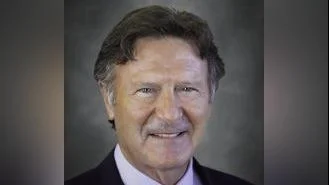Champaign Plan Commission met Wednesday, Feb. 1.
Here are the minutes as provided by Champaign:
CITY OF CHAMPAIGN
PLAN COMMISSION MINUTES
February 1, 2017
Meeting was called to order at 4:00 p.m.
Roll Call:
Members Present: Reynolds, Cole, Dudley, Carlson, Elmore
Staff Present: Kowalski, LeRoy, VanBuskirk, Marino
Minutes:
The minutes of the January 18, 2017 meeting were unanimously approved and accepted as submitted.
Kowalski: Explains that we are currently under a planned development moratorium. Today is a Study Session to get your input to help us make the Planned Development Ordinance more relevant and easier to use.
LeRoy: Reviews the materials that have been provided to the Commissioners and explains the agenda for the meeting. The agenda reads as follows: Purpose of Planned Development Ordinance, Recent Examples of Planned Developments, Approval Process.
The steps that have already been done in the process are explained which included meeting with a focus group, local developers and now the Plan Commission.
Ben reviews the purpose statement of the Planned Development Ordinance and asks what the Commission sees as the purpose of planned developments.
Reynolds: A lot of planned developments are project that are not allowed under the Zoning Ordinance and it is just a way to squeeze in more density. If you need a Planned Development Ordinance there is something wrong with your Zoning Ordinance. This is a way to get things that are not allowed in the Zoning Ordinance. So, why not change the Zoning Ordinance. It is a vehicle to get more than the rules allow.
Cole: Transitioning from one zoning district into an adjacent district with a project that doesn’t fit with either area. Suggests that maybe the Planned Development Ordinance apply to a certain area of the City. There is a reason to have one but on a more restrictive basis.
Commission discusses the Colony West development and what the waivers for the area would have been.
Elmore: Is there a way to say if you can work with a waiver; that a City Commission can evaluate it on their own merits? We are not going to use the Planned Ordinance unless certain criteria are met.
Kowalski: Explains the underlying premise of the Planned Development Ordinance. It is kind of a trade-off concept. But, perhaps there are a handful of waivers we could use. The group talks about tradeoffs that have been made in the past.
Reynolds: I have a hard time trying to assess how to vote. Kowalski: Excellent comment. We are wondering how you review these to come up with your decision. VanBuskirk: The other side is that waivers have a different set of standards than a variation that essentially has the same outcome without the tradeoffs. Reynolds: If usually, what is at stake is more density. Why does the City want to do that? Why don’t you just increase density? LeRoy: Great question.
This came up in an earlier meeting that we would potentially see fewer planned development applications going forward because of the new code.
Kowalski: The purpose statement – has anyone went back to the purpose statement and said does this case meet the purpose statement? Commission indicates that if it is provided they will review. Dudley: Relies on staff. It is your daily responsibility and you are professionals.
Kowalski: Clarifies that he means staff is responsible to make sure it meets the criteria?
Dudley: Yes.
Commission discusses that they expect that staff has checked what they are given to review as a Commission. Paul suggest language changes in the purpose statement.
Elmore: The itemized criteria in the purpose statement are flexible and subject to interpretation. Commission discusses how it would work if there were a property with multiple zoning districts and Ben indicates that this could be a question asked to determine if a case truly is a planned development candidate.
Carlson: Asks about the section of the purpose statement that indicates the change will advance the Comprehensive Plan. She indicates that it helps her to have the report say if it does or doesn’t advance the Comprehensive Plan.
Cole: The purpose statement gives to much latitude. Just a few references to the Comprehensive Plan and zoning district and whether or not the proposal is consistent with both.
Eliminate subjective criteria. Elmore: I have less of an issue with the Comprehensive Plan issue. The planned development should be mostly consistent with the Comprehensive Plan.
Have more specific language.
Reynolds: Talks about some past cases and asks if one Ordinance is good for all cases. Some of them are so different and vary in size.
LeRoy: Shows examples of recent planned developments and asks Commission to think about if the development is innovative and does it really need a planned development.
The edge-oriented developments shown include TDFC#4, El Toro and Barrington Place Apartments, The Cove and Parkland Point Apartments. Waivers are explained for each project.
Ben indicates he will now show single lot core area projects. The projects shown include Suites on Third and HERE. Waivers are explained for each project.
The next group of projects shown are multiple lot core infill and included Midtown Plaza, Latitude, The Quarters, and Campus Center. The waivers are explained and Ben indicates The Quarters Planned Development also included a property that is across the street that contains a restaurant.
Which of those projects jump out as something that deserves a planned development and is innovative and not just a regular apartment building?
Elmore: I look at the number of waivers being requested. To get it done you can treat the symptoms but when do you do surgery? What are the side effects? If it doesn’t exceed a minimum number of waivers why don’t we figure out a way to do it without a planned development? LeRoy: You are more inclined to support a project that needs multiple waivers versus one waiver? Elmore: Yes. Reynolds: The more waivers requested the more inconsistent with the underlying Zoning Ordinance it will be.
Commission discusses waivers and how they are handled. Jeff explains how the West Quad project was handled. Kowalski: We have strict criteria for variations and they go to the Zoning Board of Appeals. All findings must be met in order to have the variation granted. Rob explains the criteria and how restrictive they are.
Reynolds: I would assume Planners like these things because you get to negotiate and it gives flexibility and the City more input? Kowalski: Sometimes a planned development is a way to get a nicer looking building. That is why we just adopted new zoning standards to address this issue. It can be beneficial to use a planned development if there is a lot of neighbor interest. It gets the process back into the public and allows the neighbors to have input.
Cole: Speaking as a lawyer the Planned Development Ordinance sounds more like the Constitution and the Zoning Ordinance sounds like the Statute. Paul explains. Pair purpose language down and rely more on the Ordinance. Rely on the Zoning Ordinance.
Elmore: Longer range I get the clear picture you like planned developments. He explains how staff interpretations can change as staff changes. The more flexibility the more the issue.
Marino: Flexibility is not the right word ambiguity is more of the correct word. I prefer a project to be built by right. Kowalski: Explains that the Midtown Plaza and the Campus Center are two good examples of the use of a planned development. He explains that the planned development process was an opportunity to have input on the site planning. For the Campus Center he explains that this also provided a public parking garage.
Carlson: The planned development process is a plus because you can use them to enforce items that were agreed to in the planned development.
Elmore: Are we thinking about how to structure this too much when the real issue is if you are looking at a development you need to be working with the right set of tools. Too many issues where you don’t have the right set of rules and cool projects won’t get built. Kowalski: This should be one of the tools in the tool box and not have to work for everything.
Commission discusses having the right tools and the need for a tighter clearer purpose statement. Commission also discusses past projects that made sense.
LeRoy: The reports that we provide, the way we provide the information is it a good format?
Do we provide enough information?
Commission indicates that reports are very thorough and it is hard to come up with questions.
Commissioner Elmore states that the quality is not like this everywhere. Commissioner Dudley indicates that he knows his meeting packet will have a comprehensive report, with details and options. It is not very often that I don’t know what my decision is going to be. It would take something significant to change my mind.
Examples of cases and reservations the Commission had about them is discussed.
Kowalski: We expect to have a purpose statement explaining how the project is innovative and this will be included in the staff report as well as the waiver information that is currently presented in a report.
Elmore: You get into a little more detail, I want to see big picture, why can’t it be done another way.
Commission discusses how planned developments can be accomplished and everyone treated fairly.
Reynolds: Talks about amendments and how they can change the original plan. Examples of projects that have changed drastically are discussed. Elmore: Could you build into the Ordinance something that would not allow multiple amendments if all bases are covered in the original planned development?
LeRoy: Are there any final thoughts or comments? We have a Study Session scheduled in March as well as a Study Session with City Council also in March. We will get feedback from both groups prior to adoption.
Adjourned at 5:22 p.m.






 Alerts Sign-up
Alerts Sign-up